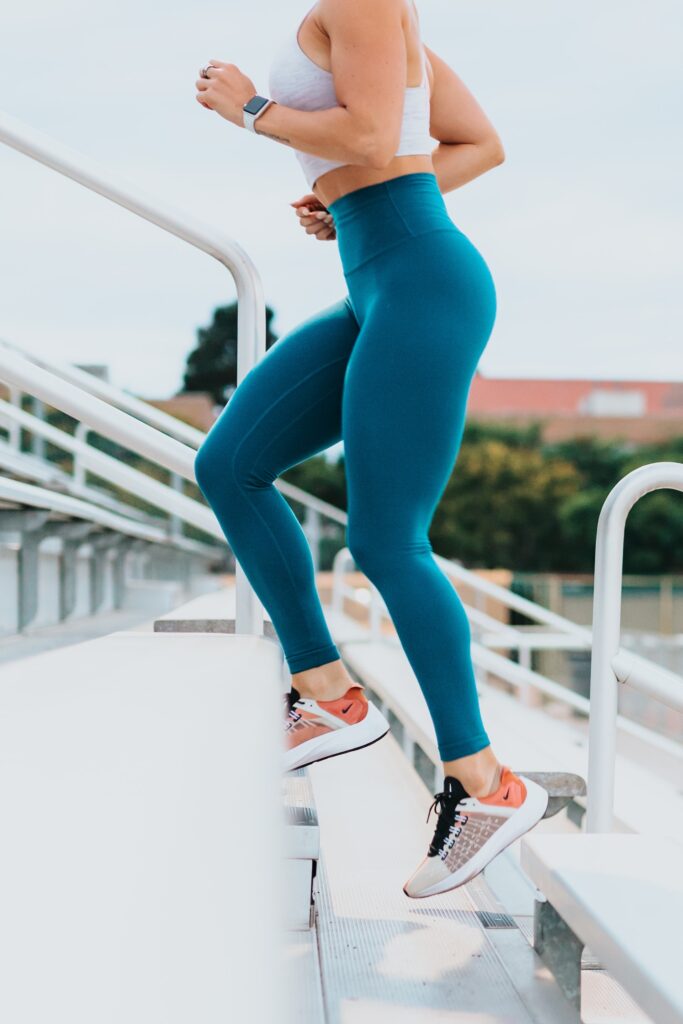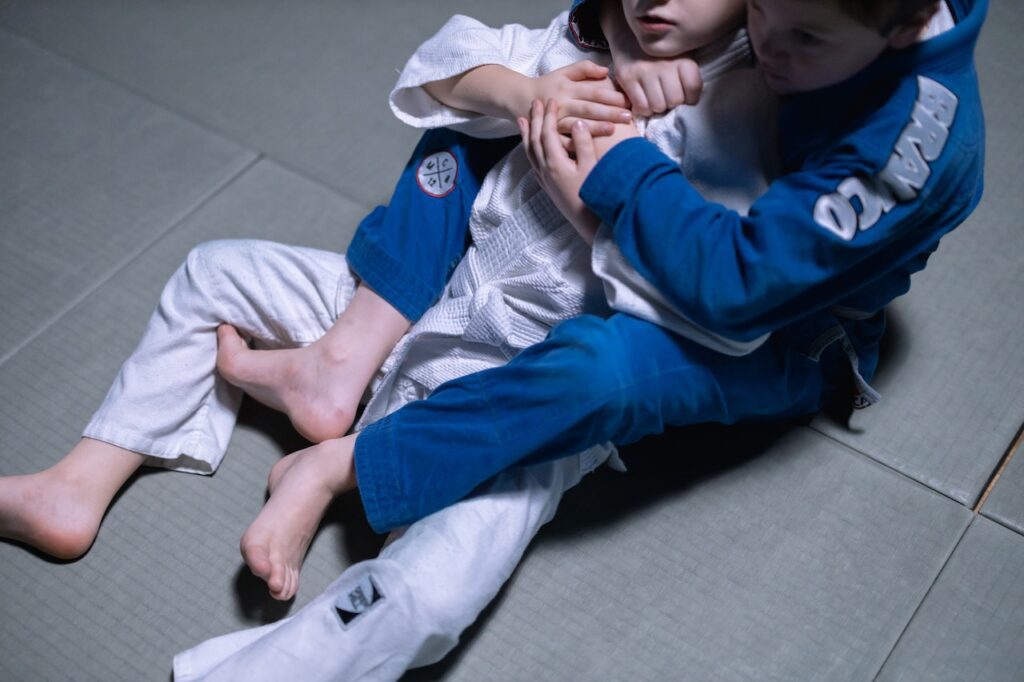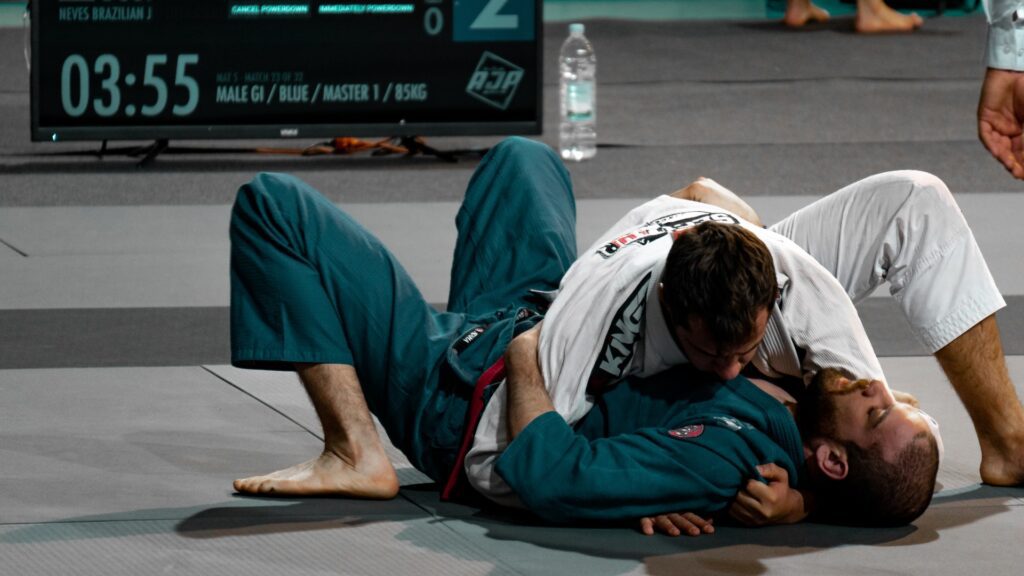
At its core, Brazilian Jiu Jitsu is centered around self-defense that comes with high demands on your mind and body. One of the best ways to improve your abilities as a BJJ practitioner is to take your physical conditioning to the next level. BJJ is unique in a sense that constantly engages muscles throughout your entire body. It’s tough on your body. Because of this, you’ll need to improve your physical conditioning to be in shape whether you’re a competitive fighter or just want to learn a new skill.
Before we go over 5 ways to improve your physical conditioning, we will cover what Brazilian Jiu Jitsu is as well as a bit of its history. We will then share the 5 physical conditioning tips to help you be the best version of yourself.
What is Brazilian Jiu Jitsu?

Brazilian Jiu Jitsu a fighting system that places a major emphasis on ground fighting techniques. BJJ’s roots go back to the early 1900s in Brazil where techniques and strategies from judo and Japanese jujutsu influenced Helio Gracie’s philosophy focused on practical martial art. Helio’s developments led to the ability for BJJ practitioners to survive and possibly neutralize a stronger, more aggressive opponent through technique and leverage.
Gyms offering BJJ classes will teach various techniques such as takedowns, pins, escapes, and submissions like joint locks and chokes. BJJ provides effective tools for self-defense as well as chances for competition as well. Competition gives BJJ athletes the opportunity to test their knowledge and abilities in high-pressure scenarios against a full resisting opponent.
The Ultimate Fighting Championship (UFC) was a major platform for the initial explosion in growth for BJJ as Royce Gracie showed exceptional dominance when lined toe to toe with other fighting styles. Here’s a quick video showing Royce Gracie in action against Ken Shamrock:
Gi and no gi
There are two general categories for BJJ: Gi and no gi. Gi is the traditional BJJ uniform complete with a belt. No gi means there isn’t a gi in the style. No gi practitioners typically wear spats, shorts, t-shirts, and rash guards. The rulesets can vary as well since gis make it easy to strangle opponents with lapels and also control opponents with grips.
Here’s a video showing highlights of ADCC which is no gi:
To give you a better idea of what a BJJ gi match can look like, here’s a video of IBJJF highlights:
Physical conditioning tips for BJJ practitioners

BJJ tests you in different ways. There are times when you’re channeling your explosiveness and other times where you’re having to scale back your output levels and breathe. To be at your best, it’s vital that you invest in your physical conditioning. Being in great shape is freeing because you’re able to focus more on your technique and be mentally present. You’re not in panic mode because you’re not out of breath just trying to do basic movements. Here are 5 tips you can add today to your training regimen.
- Stay hydrated and drink plenty of water: Proper hydration leads to multiple benefits including helping your body get rid of waste and also keeping you mentally sharp. With proper hydration, you’re also less likely to experience cramping. You’ll be able to put yourself in a position to train for longer periods of time and bounce back quickly.
- Consistently eat nutritious foods: You can’t be at your best without the right fuel. Eat foods rich in vitamins and minerals. Your body needs adequate calories to move in all the different ways that you’ll need to move your body in BJJ. It’s important that you plan to eat enough healthy foods throughout the day whether you’re training once a day or every other day.
- Know who you can increase training intensity with and when: Not all of training partners in your gym/academy will be able to physically push their limits with every roll. The same goes for you due to your limitations. You may be injured or coming back from an injury which will affect your abilities on the mats. Your training partners may be in a similar scenario as well.
- Cross-train whenever possible: There are different ways you can cross-train in order to strengthen your body, stay healthy, and prevent injuries. You can maximize gains by also doing other activities that add to your overall Brazilian Jiu Jitsu game. Complimentary sports you can add if it works for you include judo and wrestling. You can also add triathlons as well to help you be in great physical shape. Cross-training helps you build other muscle groups that you don’t always engage in BJJ.
- Implement a conditioning program that addresses both aerobic and anaerobic demands: There are times where a BJJ training session has similar cardio demands as a long swim session. There are also times where you need to be quick and explosive. The be at your best, follow a conditioning program that strengthens both aspect your overall fitness. It’s in your best interest to do things that make you stronger while increasing overall lung capacity.
All of the tips listed above will help you be a better BJJ practitioner. The level of your physical conditioning will empower you to be the best you can be every training session and every time you compete. If you feel like you’re struggling and you’re always catching your breath, ask yourself which of the tips above are you missing. You can also reflect on areas you need to improve on. As you take steps to be better, you’ll start to notice improvements in your performance over time.
Common questions about BJJ
Here’s a quick list of questions and answers regarding Brazilian Jiu Jitsu:
Q: Can BJJ help me lose weight?
A: Yes, BJJ can help you lose weight. BJJ is very physical in nature. As a result, people who train often leave the mats sweaty and happy after constantly exerting physical energy over the course of 60 minutes or more.
Q: Is BJJ effective in self-defense?
A: Yes, BJJ teaches people how to avoid altercations, control distance, take a fight to the ground, and neutralize/control an opponent in a one-on-one hand-to-hand combat scenario. You also experience an increase in self-confidence
Q: Can I still learn BJJ if I have no prior martial arts experience?
A: Yes, you can learn BJJ without any martial arts experience. You can acquire the skills you need in BJJ with consistent training and class attendance.
Q: Can BJJ be used in MMA?
A: Yes, many of the best MMA fighters have a strong BJJ background such as BJ Penn, Mackenzie Dern, Demaian Maia, Anderson Silva, and Nate Diaz.
Go train!

Now that you have real tips on how to improve your BJJ game, start training! It doesn’t matter if you’re a blue belt who hasn’t trained in years or have never been a white belt. This is your sign to begin your journey in BJJ or even restart your journey as a jiujiteiro.
Finding a Brazilian Jiu Jitsu gym is fairly easy to do. We recommend doing a quick Google Maps search of BJJ gyms near you. You’ll see several results on a list identifying gyms that are close to you. After you’ve selected 3 gyms you’re willing to try, sign up for trial classes to test them out. This will give you an opportunity to test out different gyms to see if you like the environment and teaching styles. After you’ve tested out different brands, decide on which gym is right for you and start training!
